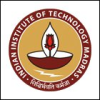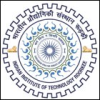How to become a Statistical Assistant
Overview, Courses, Exam, Colleges, Pathways, Salary

Overview
Who is Statistical Assistant ?
A statistical assistant is a professional who provides support in collecting, organizing, analyzing, and interpreting statistical data for various purposes. They work in a wide range of industries, including government agencies, research institutions, healthcare organizations, educational institutions, and private companies. Statistical assistants are proficient in statistical software and tools and assist statisticians and researchers in their data analysis and research projects.The responsibilities of a statistical assistant may include data collection, data entry, cleaning and validation, conducting descriptive statistical analysis, creating charts and graphs, and preparing reports and presentations. They often work with large datasets and use statistical software packages such as SPSS, SAS, or R to perform data analysis and generate meaningful insights.Statistical assistants may also assist in survey design and administration, sampling techniques, experimental design, and data visualization. They help ensure the accuracy and reliability of data by applying appropriate statistical methods and techniques.Strong analytical and problem-solving skills are crucial for statistical assistants to understand research objectives, identify trends or patterns in data, and interpret statistical findings. They need to have a good understanding of statistical concepts, methodologies, and basic mathematical skills.Communication skills are also important as statistical assistants may need to collaborate with researchers, present findings, and effectively communicate statistical information to non-technical audiences.
Typical day at work
What does Statistical Assistant do?
- Data Collection and Entry: Statistical assistants assist in gathering data through various methods such as surveys, questionnaires, experiments, or data extraction from databases. They ensure accurate data entry, perform data cleaning and validation, and organize the data for analysis.
- Statistical Analysis: Statistical assistants perform basic statistical analysis on collected data using statistical software and tools. They calculate descriptive statistics, such as means, medians, and standard deviations, and assist in more advanced analyses, including regression analysis, hypothesis testing, or multivariate analysis.
- Data Visualization: Statistical assistants create charts, graphs, and visual representations of data to aid in data interpretation and presentation. They use software tools like Excel, R, or Tableau to generate visualizations that effectively communicate trends, patterns, and insights derived from the data.
- Report Preparation: Statistical assistants contribute to the preparation of reports, summaries, and presentations that communicate the results of statistical analyses. They help in organizing the information, formatting the content, and incorporating appropriate tables, charts, and figures to present the findings accurately and clearly.
- Quality Control and Assurance: Statistical assistants assist in ensuring the quality and reliability of data by conducting quality control checks, identifying errors or outliers, and suggesting corrective actions. They assist in reviewing research protocols and ensuring compliance with data protection and confidentiality standards.
- Research Support: Statistical assistants provide support to researchers and statisticians by conducting literature reviews, assisting in study design, and contributing to the development of research methodologies. They assist in data sampling, experimental design, and survey administration.
- Software and Tool Proficiency: Statistical assistants are proficient in statistical software and tools such as SPSS, SAS, R, or Excel. They are responsible for maintaining and updating datasets, managing databases, and performing data manipulations as needed.
- Collaboration and Communication: Statistical assistants collaborate with team members, researchers, and statisticians to understand project requirements, discuss findings, and communicate results effectively. They may assist in preparing presentations, explaining statistical concepts to non-technical audiences, and supporting the dissemination of research findings.
Abilities and Aptitude needed
What are the skills, abilities & aptitude needed to become Statistical Assistant?
- Statistical Knowledge: A solid understanding of statistical concepts and methodologies is essential. Statistical assistants should be familiar with descriptive statistics, inferential statistics, hypothesis testing, regression analysis, and other basic statistical techniques.
- Data Analysis and Software Skills: Proficiency in statistical software packages such as SPSS, SAS, R, or Excel is crucial. Statistical assistants should be comfortable using these tools for data manipulation, analysis, and visualization. Strong Excel skills, including formulas, pivot tables, and chart creation, are particularly valuable.
- Data Management and Organization: Statistical assistants work with large datasets, so the ability to effectively manage, organize, and clean data is essential. Attention to detail and data entry and validation accuracy are necessary for reliable analysis.
- Analytical Thinking: Statistical assistants should possess strong analytical and problem-solving skills. They need the ability to interpret data, identify trends or patterns, and draw meaningful insights from statistical analyses.
- Mathematics Skills: A good foundation in mathematics is beneficial for understanding statistical concepts and calculations. Knowledge of basic mathematical concepts, including algebra, calculus, and probability theory, is valuable.
- Communication Skills: Clear communication is essential for statistical assistants to understand project requirements, collaborate with team members, and present findings effectively. They should be able to explain statistical concepts and results to technical and non-technical audiences.
- Time Management and Organization: Statistical assistants often work on multiple projects simultaneously. Strong time management skills, and the ability to prioritize tasks, and meet deadlines are essential for success in this role.
- Continuous Learning: The field of statistics is constantly evolving, with new methodologies and techniques emerging. A willingness to learn and adapt to new statistical tools and advancements is crucial for statistical assistants to stay updated and enhance their skills.
Salary
Salary for Statistical Assistant?
The salary of Statistical Assistants in India can vary based on factors such as experience, skill level, location, industry, and the organization's size. Additionally, the specific responsibilities and requirements of the role can influence the salary range.
- Minimum Average Monthly Salary: The average monthly salary for entry-level Statistical Assistants in India typically ranges from Rs.15,000 to ?25,000. These are the starting salaries for individuals new to the profession or with limited experience.
- Maximum Average Monthly Salary: The average monthly salary for experienced and highly skilled Statistical Assistants in India can range from ?30,000 to ?50,000 or more. Senior-level Statistical Assistants with extensive experience, specialized skills, and expertise in specific industries or statistical software may earn higher salaries.Factors such as the complexity of statistical analysis, the industry-specific knowledge required, the ability to handle large datasets, and the specific organization can contribute to higher earning potential for Statistical Assistants.
- Highest Paying Jobs and Scope: Statistical Assistants are often found in sectors such as research, analytics, finance, healthcare, and market research. Companies engaged in data-driven decision-making and analysis may offer higher salaries to attract skilled and experienced Statistical Assistants.The field of statistical analysis and data management has many opportunities in India. The demand for Statistical Assistants is increasing across various industries, including government, healthcare, finance, market research, and technology. Statistical Assistants can work in roles that involve data collection, cleaning, analysis, and reporting.
Pathways
How to become an Statistical Assistant?
Entrance Exam
Entrance Exam for Statistical Assistant ?
Courses
Which course I can pursue?
Best Colleges
Which are the best colleges to attend to become an Statistical Assistant?
Industries
Which Industries are open for Statistical Assistant?
Statistical assistants can find employment opportunities in a wide range of industries and sectors where data analysis and statistical expertise are required. Here are some industries that commonly employ statistical assistants:
- Government: Government agencies at the local, state, and federal levels often employ statistical assistants to support data analysis and research. They may work in departments such as health, economics, transportation, or social sciences, where statistical data plays a crucial role in policy-making and decision-making processes.
- Research and Academia: Universities, research institutions, and academic departments employ statistical assistants to support research projects, data analysis, and statistical modelling. They may work in areas such as social sciences, healthcare, economics, psychology, or education.
- Healthcare: Statistical assistants play a role in healthcare research and data analysis, supporting studies on patient outcomes, disease prevalence, healthcare utilization, and clinical trials. They may work in hospitals, healthcare research organizations, or public health agencies.
- Market Research: Market research companies utilize statistical assistants to analyze survey data, conduct data cleaning and validation, and generate insights for marketing and business strategies. They assist in understanding consumer behaviour, market trends, and competitive analysis.
- Financial Services: Banks, insurance companies, and financial institutions employ statistical assistants to analyze financial data, conduct risk assessments, and support modelling and forecasting activities. They contribute to areas such as credit risk analysis, investment analysis, or actuarial work.
- Consulting and Analytics: Statistical assistants are sought after by consulting firms and analytics companies. They assist in data analysis, report generation, and providing statistical support to clients across various industries, such as management consulting, marketing analytics, or data-driven decision-making.
- Non-profit Organizations: Non-profit organizations often require statistical assistance for program evaluation, impact assessment, and data-driven advocacy. Statistical assistants contribute to data analysis, report preparation, and monitoring outcomes.
internship
Are there internships available for Statistical Assistant?
Internships provide valuable hands-on experience, allowing individuals to apply their statistical knowledge and gain practical skills in a professional setting. Here are some avenues for finding internships as a statistical assistant:
- Government Agencies: Many government agencies offer internships in data analysis, research, or statistical departments. These internships provide exposure to real-world data analysis projects and the opportunity to work with experienced statisticians and researchers.
- Research Institutions and Universities: Research institutions and universities often offer internships within their statistical or research departments. These internships provide the opportunity to assist in ongoing research projects, gain experience in statistical analysis, and contribute to data-driven research initiatives.
- Private Companies: Consulting firms, market research companies, and data analytics companies may offer internships for aspiring statistical assistants. These internships provide exposure to real-world applications of statistical analysis in various industries and sectors.
- Non-profit Organizations: Non-profit organizations involved in research, policy advocacy, or program evaluation may offer internships for individuals interested in statistical analysis. These internships allow interns to contribute to meaningful projects while gaining experience in statistical methods and data analysis.
- Academic Programs: Some academic programs, particularly those in statistics, mathematics, or data science, may have internship components as part of their curriculum. These internships provide opportunities to apply statistical knowledge in practical settings and gain industry-specific experience.
Career outlook
What does the future look like for Statistical Assistant?
The future outlook for statistical assistants is promising, given the increasing reliance on data-driven decision-making in various industries. As organizations continue to gather and analyze large amounts of data, the demand for professionals who can assist in data management, statistical analysis, and interpretation is expected to grow. Statistical assistants can find employment opportunities in sectors such as government, healthcare, finance, research, consulting, and more. With the rapid advancement of technology and the growing emphasis on data-driven insights, the need for skilled statistical assistants is likely to remain strong, offering a positive career outlook in the field.







